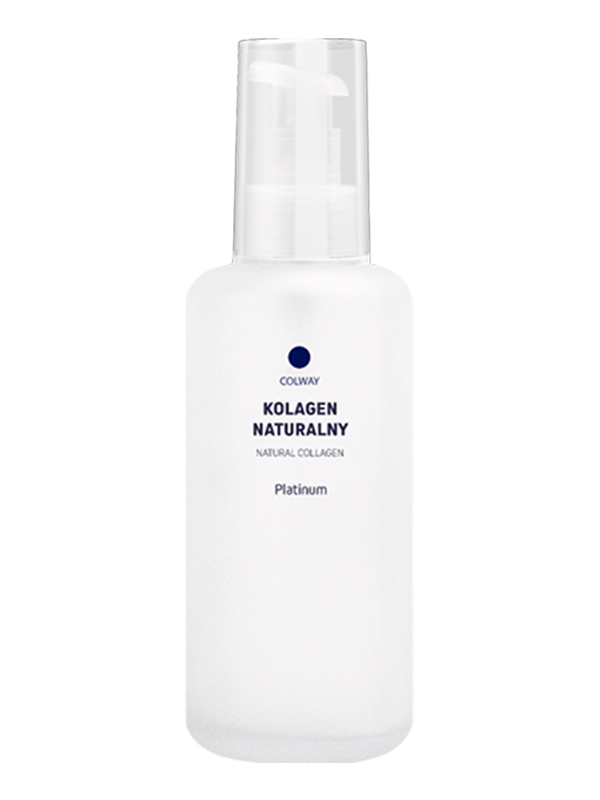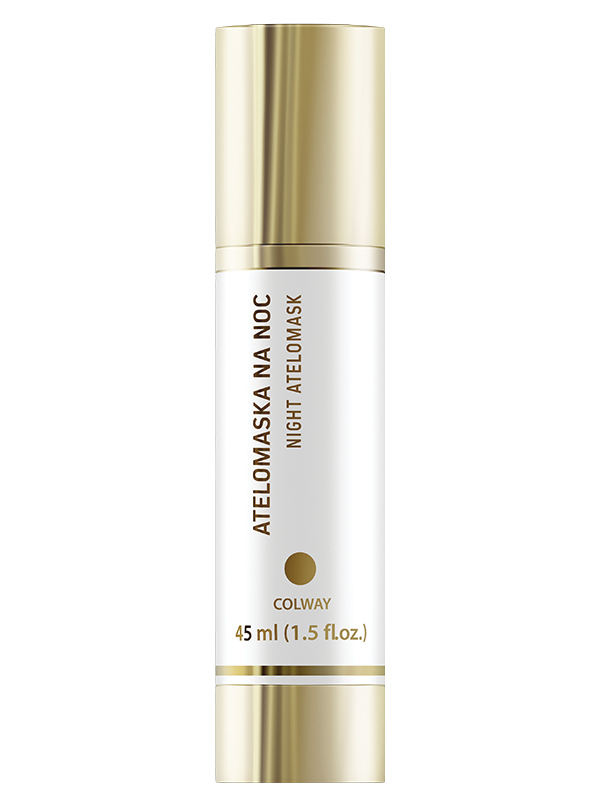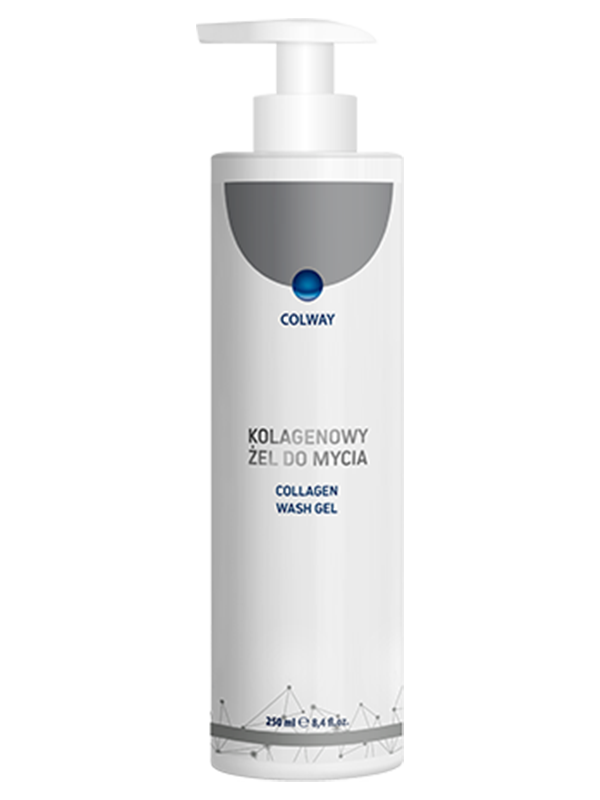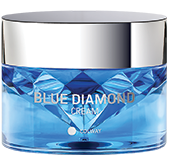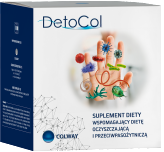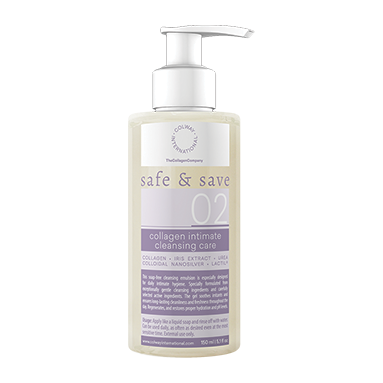Questions & Answers
The collagen content of a substance is not measured as a percentage, but the amount of hydroxyproline units (an amino acid not found elsewhere in nature) in a microliter or in a microgram of a given substance is determined. In Natural Collagen COLWAY there is an average of 1980-2035 hydroxyproline units per 1 microlitre of hydrate. The hydrate contains approx. 96% water and up to 3.5% proteins in the remaining dry matter. About 90% of these proteins are collagen. The rest are elastin and protein debris from filtration.
The fish from which the collagen molecules that form the hydrate are isolated – are silver carp (Hypophthalmichthys molitrix) and bighead carp (Hypophthalmichthys nobilis). These fish live exclusively in rivers and lakes, where they feed mainly on plankton and small plant food. Nowhere in Europe is silver carp fed with fodder that may raise doubts as to their microorganic “purity”. Importantly, the problem of heavy metal deposition in fish organisms does not apply to freshwater fish – including silver carp. We ensure that each batch of collagen is thoroughly tested for the possible content of metals. Therefore, carp from which we obtain collagen are not “specially bred” and are certainly not fed. They live freely in safe Polish, Hungarian and Ukrainian waters, where their main role in the ecosystem is to regulate the excessive growth of phytoplankton. An interesting fact is that the most thermally resistant collagen is obtained from fish that feed in warmer waters, i.e. the Balkan carp.
Collagen is indeed a completely natural product – not only in name. Its INCI composition is very simple, and the list of ingredients is short: water, collagen, elastin – a bit of collagen’s sister protein, minimal amounts of lactic acid that occurs naturally in our body (e.g. muscles and skin) and a short-chain fatty acid bound with simple alcohol (caprylyl glycol) to stabilize the gel. Natural Collagen Colway does not contain any parabens, dyes or flavors. As a result, it is extremely safe to use, even for people with sensitive skin.
We recommend the application at least twice a day – morning and evening. It should be remembered that the absorption and level as well as the rate of reconstruction of our collagen in the skin are influenced by many factors, such as the type and condition of our skin, biological age of the skin, and hormonal balance. For this reason, the rate of collagen absorption, as well as the amount needed to “saturate” our skin, are different.
Collagen gel is very efficient. One package of the product may be enough for many months of use. Assuming the daily application of the gel twice a day on the face and neck, the following product efficiency can be assumed:
The 200 ml capacity is enough for 10-11 months
The 100ml capacity is enough for about 4-6 months
The 50ml capacity is enough for 2-3 months
Collagen gel has three degrees of pigmentation, which is the result of the type of raw material from which the protein is obtained.
– almost transparent Platinum gel is a collagen with the highest degree of clarity, which is obtained from the abdominal fish skin, where no pigment is present. This purest collagen dissimilates to slightly “smaller” biochemically decomposition products, which makes it easier to absorb – and therefore it is dedicated to the most delicate parts of the skin
– Silver pearl gray gel is obtained from the side parts of the fish skin, where the degree of pigmentation is significant compared to the abdominal part
– the darkest Graphite gel is made from the dorsal parts with the highest degree of natural pigmentation
The amino acid composition and the distribution of subunits in the collagen chains of Silver and Graphite do not differ from the less pigmented Platinum gel
Collagen in our body is subject to continuous exchange processes: synthesis and dissimilation. It takes about a month in the liver, and 110-150 days in the skin. Up to the age of 25, the exchange is smooth – the tissues are fully functional and the skin looks young. This process slows down with age.
Collagen is produced in productive cells: fibroblasts and chondrocytes in processes called collagenogenesis. It evolves from a simple chain of amino acids through a spiral (helix), then a triple helix, to a fibrillar, and finally a fibrous form. Collagen fibers form bundles, and they form tissue.
In the helical stage, the collagen of most vertebrates on Earth is almost the same. Human and fish collagen differs only slightly in the amino acid composition in only one of the protein sequence chains.
How is fish collagen different from other collagen used in cosmetology?
Collagen is known to cosmetologists primarily in the form of high molecular weight, which does not have the properties allowing it to be absorbed into the skin. This raises theoretical misconceptions about the permeability of Natural Collagen. Natural Collagen is an aqueous solution of tertiary collagen, isolated directly from freshwater fish skins. Meanwhile, the dissimilation (decomposition) products of the fish molecular collagen helix easily penetrate the epidermis to its natural channels, extracellularly, along the keratin structures, to reach the basal layer and beyond.
Most skin make-up removers – especially toners and some micellar fluids – are acidic, which is not good for collagen because it causes it to curl. Therefore, before applying collagen, after removing make-up, with cleansing products such as milks, micellar fluids and tonics, you should additionally wash your face with water with a mild cleansing gel to neutralize the acidic reaction of the skin. The COLWAY Collagen Washing Gel is perfect for this role. Only the skin cleansed in this way should be moistened with water or COLWAY Cellular Ateloda and collagen applied to it.
Collagen is a natural fish protein, which in its structure is remarkably similar to human collagen, therefore it is characterized by a very high biocompatibility with our skin. That is why it is perfectly tolerated and absorbed by most people. However, as with all substances of natural origin, there is a group of people sensitive to fish proteins in the population. Therefore, if you have experienced allergic reactions after eating fish – we recommend caution when using the preparation. In this case, the safest thing to do is to do a skin test – just apply a small amount of the preparation to the skin on the inside of the forearm and see if there is an allergic reaction in the form of redness or rash. If the skin looks normal within 48 hours, it means that you can safely apply the preparation to larger areas of the body.
Collagen is a natural product without artificial additives and preservatives, therefore, to maintain its properties, it should be stored in a shaded place, away from sunlight and any other heat source. Natural Collagen should be protected against too high temperature, therefore, for safety reasons, we always deliver it in a specially designed styrofoam thermos that insulates it from external conditions.
